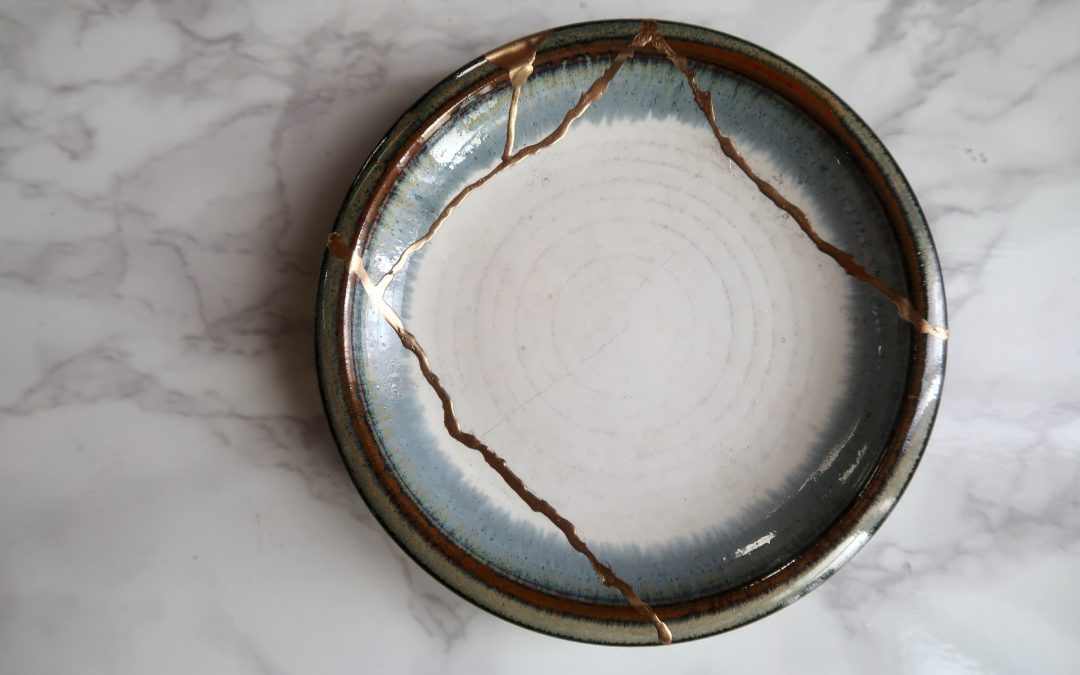Kintsugi is well known as a beautiful practice in the crafts and visual arts world; broken pottery and ceramics can be put back together often with a shining gold lacquer or resin to fill in cracks. The intention is that flaws are not hidden but celebrated. In fact, the cracks serve to add beauty and value to the original piece.
This is not just a craft, but a philosophy that is extended into a wellness practice. It falls under the umbrella of Wabi-Sabi, a Japanese concept originating from Zen Buddhism. Wabi-Sabi speaks about the appreciation of beauty in imperfection and transience. By embracing what is incomplete or imperfect, there is an acknowledgement and contentment with what is truly present. Wabi-Sabi is at work all around us; the slightly crumbly brick wall in a garden, the crows feet that appear with your elderly loved one’s smile, the faded colour on a well-worn and loved sweater.
Kintsugi is a metaphor for how we can heal and view ourselves after the occurrence of a painful or traumatic event. Life can throw many unexpected curveballs in the form of illness, the loss of a loved one, or losing a job. These events can deal a blow to one’s sense of self. It is also normal for us to try and hide or refuse to deal with our pain and wounds by burying it deeper. However, Kintsugi’s philosophy is to embrace this pain as a marker of strength and a show of authenticity. The wounds that we suffer have helped shape who we are, and allow us to not be affected in the same way as we move through life.
By applying the philosophy of Kintsugi, we can cherish our pain to live a more full and authentic life. How can you apply Kintsugi into your life?
Photo Credit: Riho Kitagawa on Unsplash

